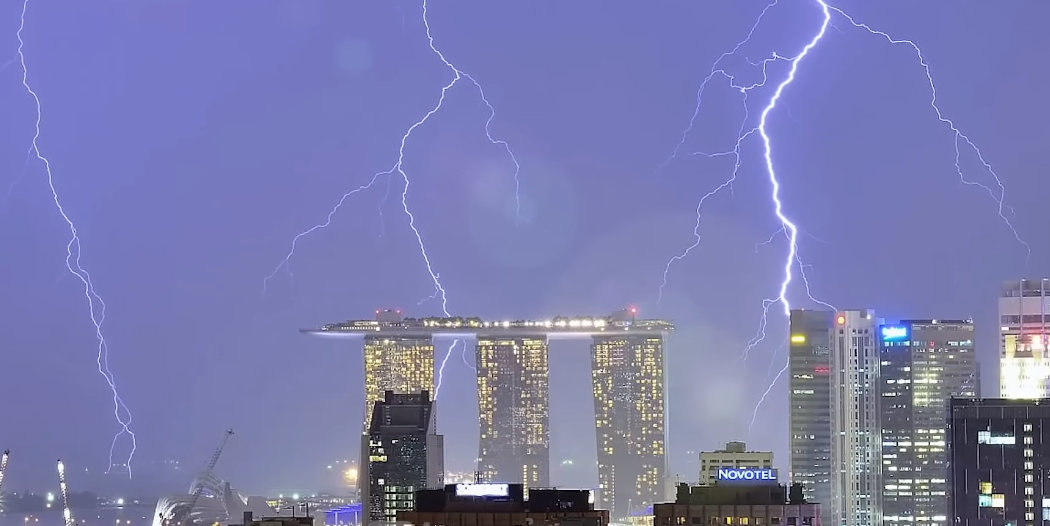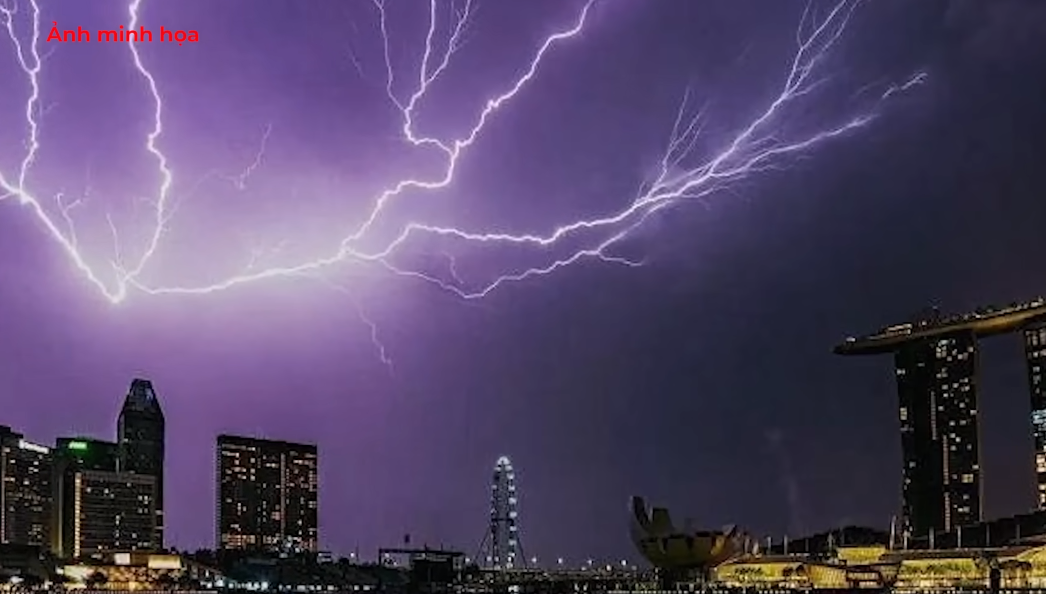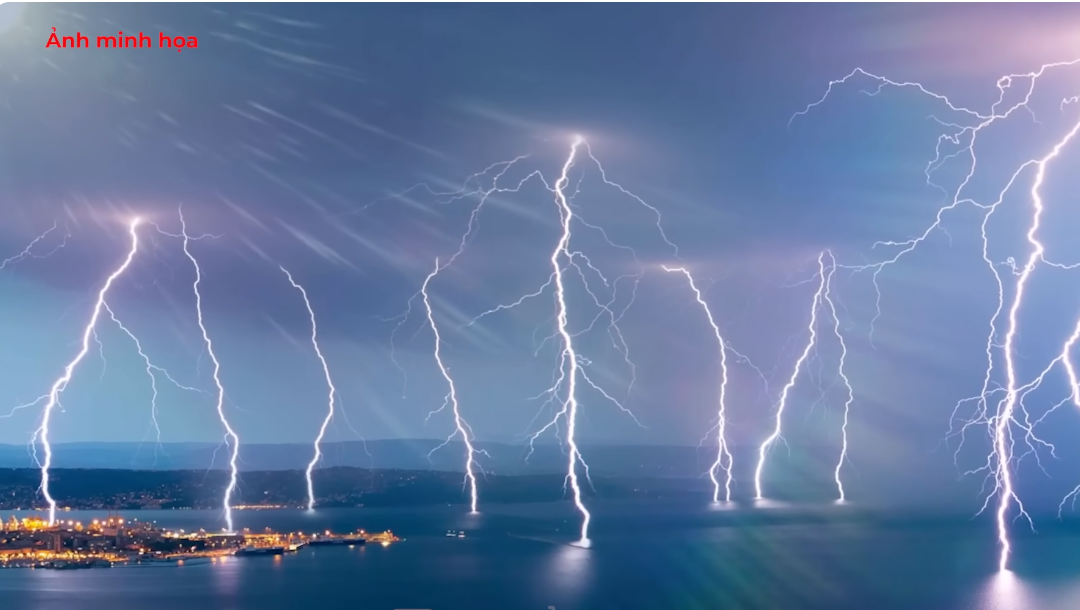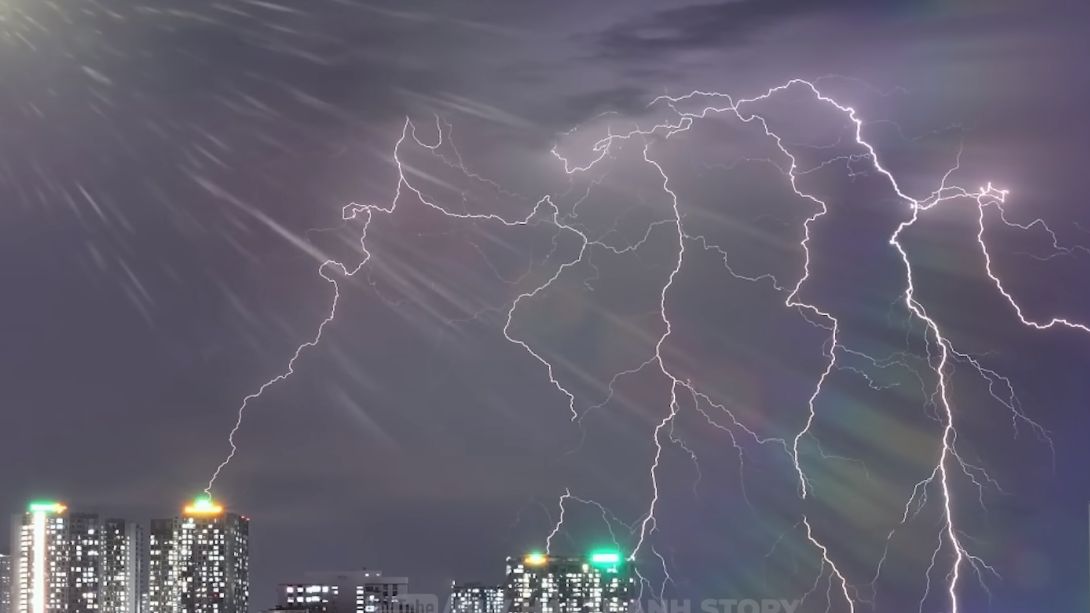Hanoi in particular and the Northern region in general have had historic days with a large number of lightning strikes. In Hanoi on June 5, 2024, it is said to have set a world record, making our capital not only mentioned domestically but also appearing in international media. But whether Hanoi in particular and Vietnam in general have to be the place with the most lightning strikes on the planet or not, the answer will be in today's article.
Looking at the numbers that helped Hanoi set a world record for the number of lightning strikes. According to statistics from the meteorological agency, during a thunderstorm from 6:00 am to 9:00 am on June 5, 2024, there were a total of 10,215 lightning strikes in Hanoi. Of which, 7,025 lightning strikes hit the ground, while the rest struck in the air, with the most intense lightning intensity from 7:45 to 8:45. Hanoi residents clearly felt this as they heard thunder when they opened their eyes, still heard thunder on their way to work, and remained fearful of thunder at the office. Climate experts in the country confirm that the number of 10,215 lightning strikes that occurred in a day in Hanoi and the surrounding area is a world record, with no other place in the world being struck by lightning with such terrifying intensity in just a few hours.
In fact, it is not easy to find specific statistics on lightning strikes at a given time because measuring lightning strikes depends on many different factors, not every place on the planet has the necessary measuring tools in every nook and cranny. For now, we will acknowledge that this is the world record of Hanoi, the world record of our capital. As for Vietnam, on average, our country will experience about 2 million lightning strikes per year. We are in one of the most lightning-prone areas on the planet, which is the Southeast Asia region, but we are not the top country in terms of lightning strikes. One key fact to mention when counting the number of lightning strikes hitting a country is that the larger the area of the country, the more lightning strikes it will experience. This is reflected in the data from 2022, which is relatively comprehensive and includes the sources of various countries.

Indonesia is the country that experiences the most lightning strikes in the world, with a figure announced by the START ISTA organization as 76,456,589. It is easy to understand because Indonesia is an archipelago country with a vast territory spread over a large area and is located in one of the most lightning-prone regions in the world, Southeast Asia. It is not surprising that they lead in the number of lightning strikes, followed by Argentina and Mexico with each country being struck by lightning about 41 million times. However, evaluating based on the number of lightning strikes may not fully reflect the situation, so people have come up with an average number per km2, and according to this number, Singapore is the most lightning-struck country. In a country with an area of just over 700 km2, each km2 is struck by lightning 163 times a year according to the latest updated statistics.
Singapore is also struck by lightning for a significant number of days in a year, averaging from 171 to 186 days, meaning that Singapore experiences lightning strikes every 2 days. With such a small country in terms of area, wherever lightning strikes, the whole country can feel it to some extent. This is very different from Hanoi because the recent record-breaking lightning strikes may be very high, but they only occurred on a particular day, while in a whole year, Hanoi will only experience one day or at most a few special days like that, no one hopes for many special days like that, the days of lightning strikes do not occur frequently like in Singapore.
In winter, it is difficult to witness lightning strikes in Hanoi when there are no heavy rains and thunderstorms. In terms of the global scale, Singapore is the place with the highest and most concentrated lightning density in the world. But in terms of regions, the Guinness record holder is a territory of Venezuela, the Catatumbo River Mouth area flowing into Lake Maracaibo covering about 13.20 km2. This is the place with the highest concentration of lightning strikes in the world, even more than Singapore.
According to the Guinness World Records, this lake receives an average of 233 lightning strikes per km2 per year, equivalent to thousands of lightning strikes over the entire lake every night, as it is an extremely large body of water leading in its own region of South America. The Catatumbo area is the place with the highest density at night, with more than 60 different lightning flashes appearing every minute, making the sky always bright and impressive. The phenomenon known as the "Catatumbo lightning" is very consistent as it occurs about 300 nights a year, mainly concentrated in one area and peaks in September. In this peak area, it receives about nearly 2 million lightning strikes. The instability of the air and humidity are key factors in creating lightning, and the Catatumbo lightning is further enhanced by the unique terrain of the area.

The lake and the surrounding plain are blocked by large mountain ranges, including the prominent Andes Mountains, leaving a narrow corridor facing north towards Venezuela. The Caribbean Sea flows in, providing endless warm water, while the hot tropical climate causes strong evaporation, creating hot and humid air. At dusk, strong winds lift the humid air high, forming cumulonimbus clouds, when water droplets in the humid air collide with ice crystals from the cold air, it creates an electric charge and lightning strikes, hence the energy from the Catatumbo lightning is so large that according to scientists, the lightning here in 10 minutes can provide enough energy to illuminate the entire South America, so NASA has named it the lightning capital of the world where dazzling light always appears every night, even for many centuries it has served as a lighthouse to help fishermen navigate their boats in the dark, and it is even more interesting when the lightning phenomenon in the area also appears in many oral stories, many hypotheses of the people of Venezuela.
We have covered some specific hotspots about lightning in the world, but looking broadly on a larger scale, there are five regions on this planet that experience the most lightning. According to the distribution map provided by world meteorological sites, these regions include:
- \n
- 01 is North America; \n
- 02 is South America; \n
- 03 is Africa; \n
- 04 is South Asia; \n
- 05 is Oceania. \n
Only Europe has fewer lightning strikes because there are not as many thunderstorms as in other regions of the world. In addition to the countries or regions that have appeared in today's story, we must also mention Africa and South Asia, with two representative countries being the Democratic Republic of Congo in Africa and Pakistan in Asia. 8 out of 10 of the most lightning-prone locations in Africa are in the Democratic Republic of Congo, with the most representative location being the Kapare district with a density of over 205 lightning strikes per km2 annually. This number is not far from the hot spot in Venezuela. In addition, lightning strikes also frequently occur in other countries in Central and West Africa. As for the South Asia region, Pakistan, as mentioned, is a hotspot for lightning, and once again, the terrain plays a decisive role when the most intense attacks occur in the Daga and Hinducus mountainous regions. In this area, up to 143 lightning strikes can be received per km2 annually, with the most intense lightning strikes occurring in August each year. In addition, in Asia and right in our Southeast Asia region, Kuala Lumpur in Malaysia is also a place where thunderstorms and lightning strikes frequently occur, which is not surprising as this place is very close to Singapore.

Returning to the story of Hanoi, the occurrence of over 10,000 lightning strikes in a large thunderstorm is not surprising. According to meteorological experts, it is not at all surprising, as compared to the number of lightning strikes in some recent thunderstorms, the recent figures are completely normal. Previously, on the afternoon of May 19, 2024, the National Meteorological and Hydrological Service system recorded 3,040 lightning strikes in the North Red River Delta region in just 10 minutes within the 16-17h time frame. Currently, our country's lightning positioning network has a total of 18 stations connected to the international lightning positioning system, and the distance at which the sensors can detect lightning ranges from 400 to 600 km. Therefore, in addition to the mainland of Vietnam, the lightning positioning stations can detect lightning strikes on the sea and near the borders of neighboring countries.
With such a large space, it is entirely possible to record 400 lightning strikes hitting the ground on average in 10 minutes or thousands of lightning strikes in a thunderstorm lasting several hours, this phase, the Northern region is experiencing many thunderstorms and extreme weather phenomena. Especially after hot sunny days, heavy rains often come with thunderstorms, so what happened recently is not unusual, the statistical numbers and stories about lightning strikes around the world hopefully give you a more multidimensional view of this extreme weather phenomenon.
